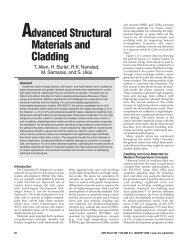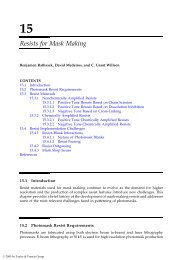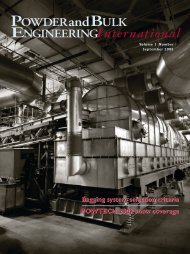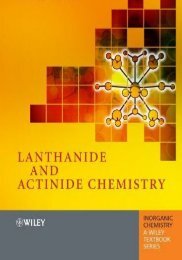Modeling of Biogas Reactors
Modeling of Biogas Reactors
Modeling of Biogas Reactors
Create successful ePaper yourself
Turn your PDF publications into a flip-book with our unique Google optimized e-Paper software.
184 6 <strong>Modeling</strong> <strong>of</strong> <strong>Biogas</strong> <strong>Reactors</strong><br />
Fig. 6.21 Mixing <strong>of</strong> a Dirac impulse<br />
in the upper module <strong>of</strong> the<br />
laboratory scale reactor (Fig. 6.19).<br />
Fig. 6.22 Mixing <strong>of</strong> a Dirac impulse<br />
(3rd module) in the pilot<br />
scale BTR (Fig. 6.20).<br />
The structure <strong>of</strong> the mathematical model developed is shown in Figure 6.23. The<br />
structures <strong>of</strong> the two models A and B follow the modular structure <strong>of</strong> the reactor<br />
concept. Both models couple two neighboring modules by the flow <strong>of</strong> the feed<br />
(V · feed), which is constant within the tower reactor and is directed from the bottom to<br />
the top <strong>of</strong> the reactor. The central idea <strong>of</strong> both models is to predict the coupling<br />
between two modules by the so-called “exchange flow rate”. This virtual flow rate<br />
(V · exchange) accounts for the situation <strong>of</strong> a turbulent exchange <strong>of</strong> volume elements in<br />
the area between two modules (A exchange). This turbulent flow is driven by the bubbles<br />
passing this area. V · feed is kept at zero during the experiment. Also, in reality the<br />
contribution <strong>of</strong> V · feed is usually small compared to the turbulent exchange flow<br />
V · exchange.






